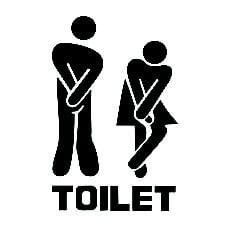Having strong pelvic floor muscles gives us control over the bladder and bowel. If our pelvic floor muscles are weak, that means the internal organs are not fully supported and you may have difficulty controlling the release of urine, faeces (poo) or flatus (wind).
Common causes of a weak pelvic floor include childbirth, obesity and straining of bowel during chronic constipation. Pelvic floor exercises are designed to improve muscle tone and prevent the need for corrective surgery.
Pelvic floor muscles are layers of muscles that support our pelvic organs and protect the bottom of pelvis. The pelvic organs are the bladder and bowel in men, and bladder, bowel and uterus in women.
The pelvic floor muscle layer has hole for passages to pass through. There are two passages in men (the urethra and anus) and three passages in women (the urethra, vagina and anus). There is also an extra circular muscle around the anus (the anal sphincter) and around the urethra (the urethral sphincter). Although the pelvic floor is hidden from view, it can be consciously controlled and therefore trained, much like our arm, leg or abdominal muscles.
Pelvic floor muscles provide support to the organs that lie on it. The sphincters can control the release of urine, faeces and flatus (wind) and allow us to delay emptying until it is convenient. When the pelvic floor muscles are contracted, the internal organs are lifted and the sphincters tighten the openings of the vagina, anus and urethra. Relaxing the pelvic floor allows passage of urine and faeces.
What could affect the pelvic floor muscles?
- Pregnancy and childbirth
- Straining on the toilet
- Chronic coughing
- Heavy lifting
- High impact exercise
- Age
- Obesity
How do I know if I have a Pelvic Floor weakness/problem?

- accidental leakage of urine when exercising, coughing or sneezing
- Need to go to the toilet in a hurry or not making it there on time.
- visit to the toilet frequently
- difficult to empty bladder/ bowel
- pelvic pain, uterus prolapse
- pain/poor sensation during sexual intercourse
How can I strengthen these muscles?
How can I strengthen these muscles?
- Squeeze and draw in the muscles around your back passage and your vagina at the same time. Lift them UP inside. You should have a sense of “lift” each time you squeeze your pelvic floor muscles.
- Try to hold them strong and tight as you count to 8. Now, let them go and relax. You should have a distinct feeling of “letting go”.
- Repeat “squeeze and lift” and let go. It is best to rest for about 8 seconds in between each lift up of the muscles. If you can’t hold for 8, just hold for as long as you can.
- Repeat this “squeeze and lift” as many times as you can, up to a limit of 8 to 12 squeezes.
- Try to do three sets of 8 to 12 squeezes each, with a rest in between.
Do this whole training plan (three sets of 8 to 12 squeezes) each day while lying down, sitting or standing. There are so many other therapeutic exercises which is equally important to help strengthen our pelvic floors. They are also known as the Low intensity core exercises.
Share:
Was this article helpful?
Share:
Was this article helpful?
Health Packages
Elevate your health with tailored health packages at Columbia Asia Hospital. Take charge of your health journey today.

